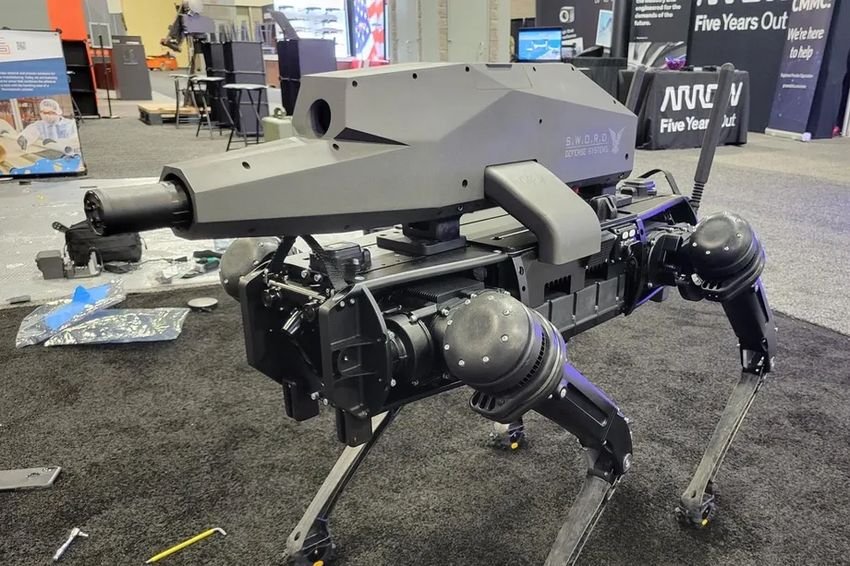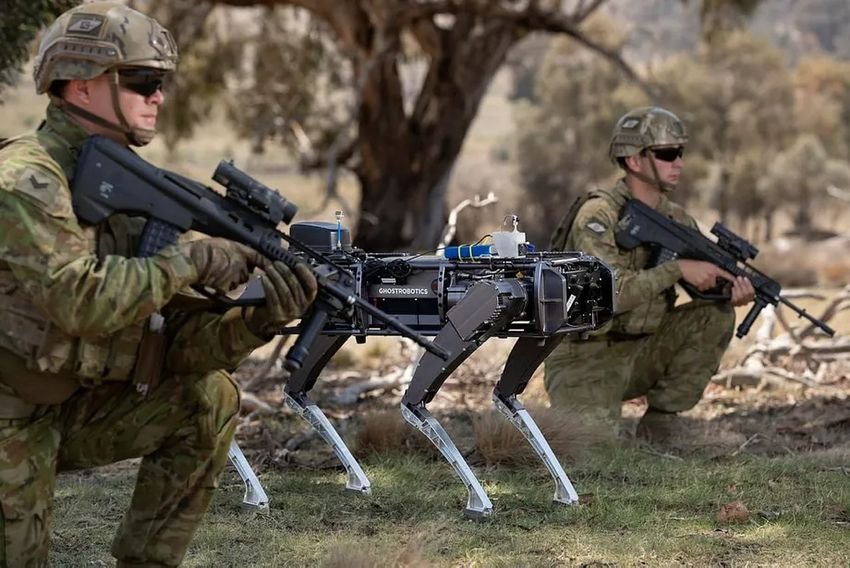A dog-shaped robot equipped with a firearm appeared. It is not clear if it is for sale, but we consider it a matter of time.

Four-legged robots are one of the most exciting developments in robotic technology. They are small, agile and able to cross environments that make wheeled machines difficult. So, of course, it was only a matter of time before someone added a weapon to them.
The image above shows a four-legged robot, a Vision 60 unit, manufactured by the American company Ghost Robotics, and equipped with a special weapon by a company specialized in small arms, Sword International Inc. The weapon itself (called the SPUR or "unmanned rifle") appears to have been designed to be mounted on a variety of robotic systems. It has a 30x optical zoom, thermal camera for aiming in the dark and an effective range of 1.200 meters.
What is not clear is whether Sword International or Ghost Robotics are currently selling this combination of weapon and robot. But even if they do not sell it, it seems that it will be done soon. Besides, Sword International is proud of its original on the official website: "SWORD Defense Systems SPUR is the future of unmanned weapons systems and this future is now".
The machine was first shown at its annual conference Association of the United States Army, in 2021, at the beginning of this week. The details of the collaboration between Ghost and Sword are unclear, but Ghost's four-legged robots are already being tested by the US military.
Last year, the 325th Security Squadron at Tyndall Air Force Base in Florida became the first Department of Defense unit to used four-legged robots in regular operations.

He now uses them to patrol the perimeter of the base, navigating them through swampy areas that are "not desirable for people and vehicles' according to an interview of the CEO of Ghost Robotics, Mr. Jiren Parikh.
Apart from the patrol which is one of the most obvious cases of using robot dogs, the manufacturers are experimenting with other purposes. They are tested for remote video and mapping, such as mobile cell towers, robots to defuse bombs, or to detect chemical, biological, radiological, and nuclear materials (otherwise known as CBRNs).
And, of course, the same weapons can be made.
The biggest question is how these robots will develop in the future and what level of supervision will be required when they start shooting at humans.
For some time now, experts have been warning about it slow an increase in the use of "killer robots" (known as Lethal Autonomous Weapon Systems, or LAWS, in official parlance) as official US policy does not prohibit their deployment. Many groups are campaigning for a preemptive ban on such systems, but as history has shown, neither human imagination nor technology can be stopped.





